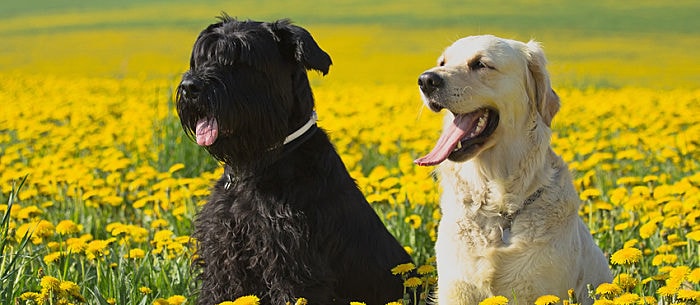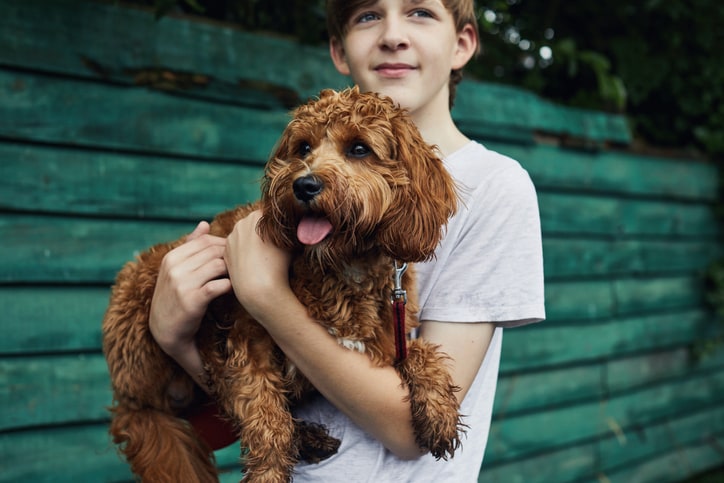Got a green thumb? It’s a great feeling to admire your handiwork, after all that watering, fertilizing and pruning. But this emotion can quickly turn to dismay and worry if your pet decides to taste your pretty plants!
Toxic plants for dogs are a serious issue for pet owners, so it’s important to learn which flora, including seasonal bouquets and cut flowers, may be cause for concern. “Pet owners should also talk to their veterinarian about local plants growing in the area that may pose a health hazard to dogs,” recommends Dr. Joe Kinnarney, a veterinarian and president of the American Veterinary Medical Association.
And even if a plant is deemed nontoxic, you still may not want your dog eating it. “Generally, any plant can cause mild vomiting or diarrhoea
if eaten, even if it’s not considered to be toxic,” says Dr. Christine Hayes, a consulting veterinarian in clinical toxicology at the American Society for the Prevention of Cruelty to Animals (ASPCA) Animal Poison Control.
Keep your pup safe. Display your plants up and out of your dog’s reach. “If you suspect your dog has ingested one of your household plants, call your vet immediately,” urges Dr. Kinnarney.
Here are 12 toxic plants for dogs that can be found in and around the house:
- Tulips
These pretty bulbs can irritate your pup’s gastrointestinal system and bring on convulsions.
- Cyclamen
Sometimes white, pink or deep red, this holiday plant has toxins in the roots and may cause gastrointestinal distress, such as heartburn, diarrhoea and indigestion.
- Azalea
This stunner is very common in the US, but it’s a disaster for dogs. Watch out for drooling, diarrhoea and even death if your pet starts to eat it.
- Chrysanthemum
Though it’s an intriguing flower that looks like a toy, don’t let your dog near it. Stomach issues, including vomiting and diarrhoea, may be the result.
- Baby’s Breath
It’s a delicate white filler in many arrangements, but it has no place in your dog’s mouth. Be on the look out for: vomiting and diarrhoea.
- Hosta
Deer love to eat it, and they seem to be no worse for wear. But a dog may suffer the same symptoms as from the above two flowers if he eats this backyard plant.
- Poinsettia
Glorious at Christmas, but no good for your canine friend. Contrary to popular belief, this plant isn’t highly toxic to pets, but it can still irritate the mouth and throat, so keep it out of reach. Dogs should also avoid another holiday favourite: mistletoe.
- Tomato Plants
Who doesn’t love this delicious ruby fruit? Your dog, that’s who, especially the leaves, stems and roots. Look out for weakness, slowed heart rate, confusion and drooling.
- Gladiola
Often used in mourning bouquets, this flower can cause drooling, lethargy and diarrhoea in a dog that decides it’s pretty enough to eat.
- Yew
This tree’s bark is a nightmare for dogs. You’ve definitely seen these small, red and green plants before, maybe even played with them as a child. It’s found in almost any yard. Be certain she doesn’t gnaw at it or the leaves lest it result in cardiac arrest, tremors, seizures or even death.
- Dumbcane
You’ve definitely seen this triangular, green plant in an office lobby or hotel room, if not your own home. You’ll be cleaning up lots of drool if your dog takes a liking to this plant, as it causes oral irritation and burning, tons of vomit and drool and makes it hard to swallow.
- Hyacinth
These colourful flowers, with their beautiful look and smell, signal the beginning of spring. Expect a variety of symptoms you don’t associate with sunshine and a light breeze when you dog accidentally eats these. The toxic plant causes everything from depression to extreme vomiting.
If you just have to have these plants in or near your home (they are really pretty!), watch your dog carefully. Be in touch with the vet if you suspect your pooch has tried to eat the plants. When you call emergency services or the vet about the poison, make sure to have all your dog’s personal information handy (including weight) and be ready to describe the symptoms, no matter how severe. If you leave your pup with a dog sitter, be sure to give them a list of this information, including the number of your vet, in case of an emergency.
Text source: Jennifer Kelly Geddes is a New York based writer and editor who specializes in parenting, health and child development. She’s a frequent contributor to Care.com and the mom of two teen girls.
* This article is for general informational purposes only. It is not intended nor implied to be providing medical advice and is not a substitute for such advice. The reader should always consult a health care provider concerning any medical condition or treatment plan. Neither Care.com nor the author assumes any responsibility or liability with respect to use of any information contained herein.













